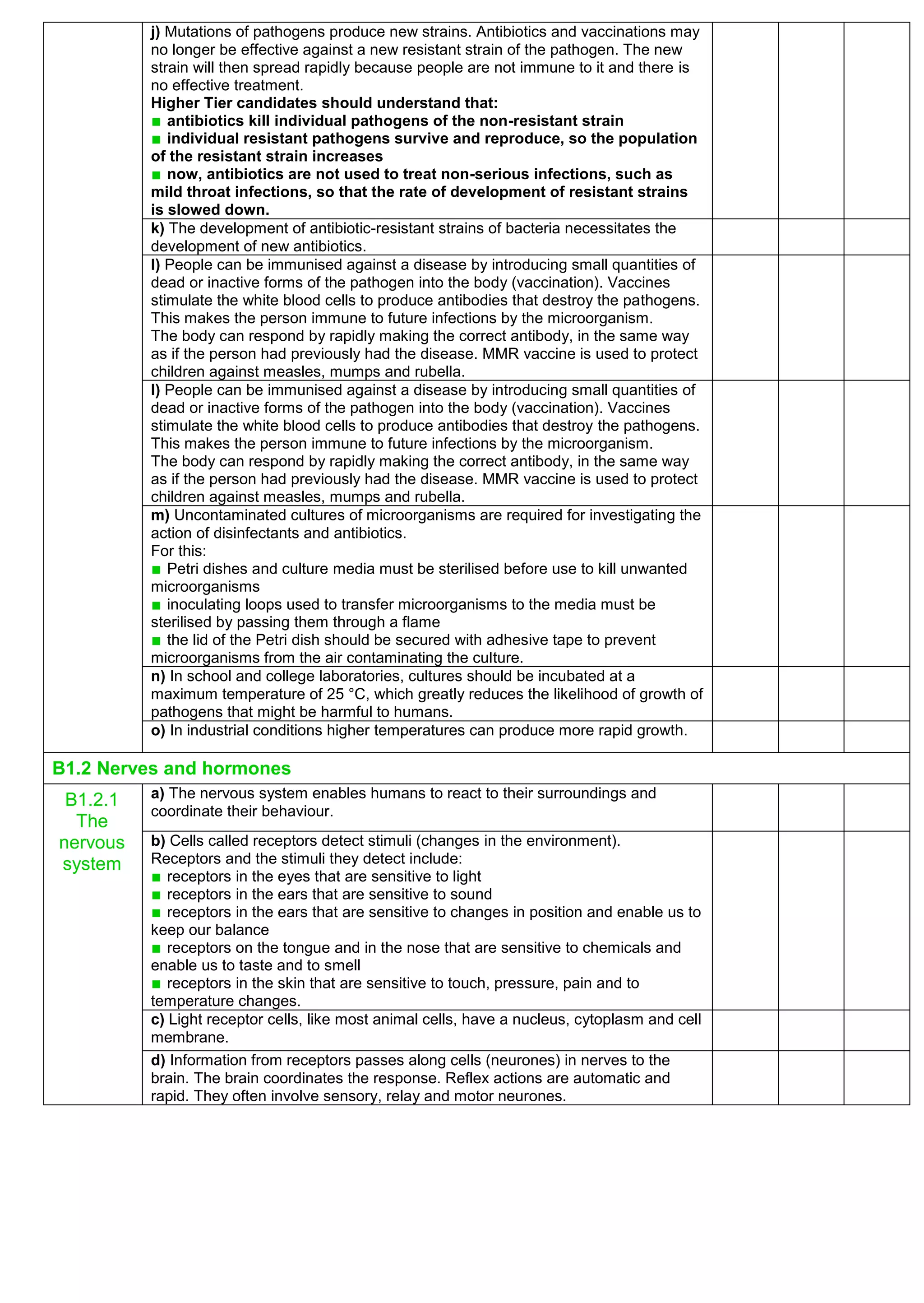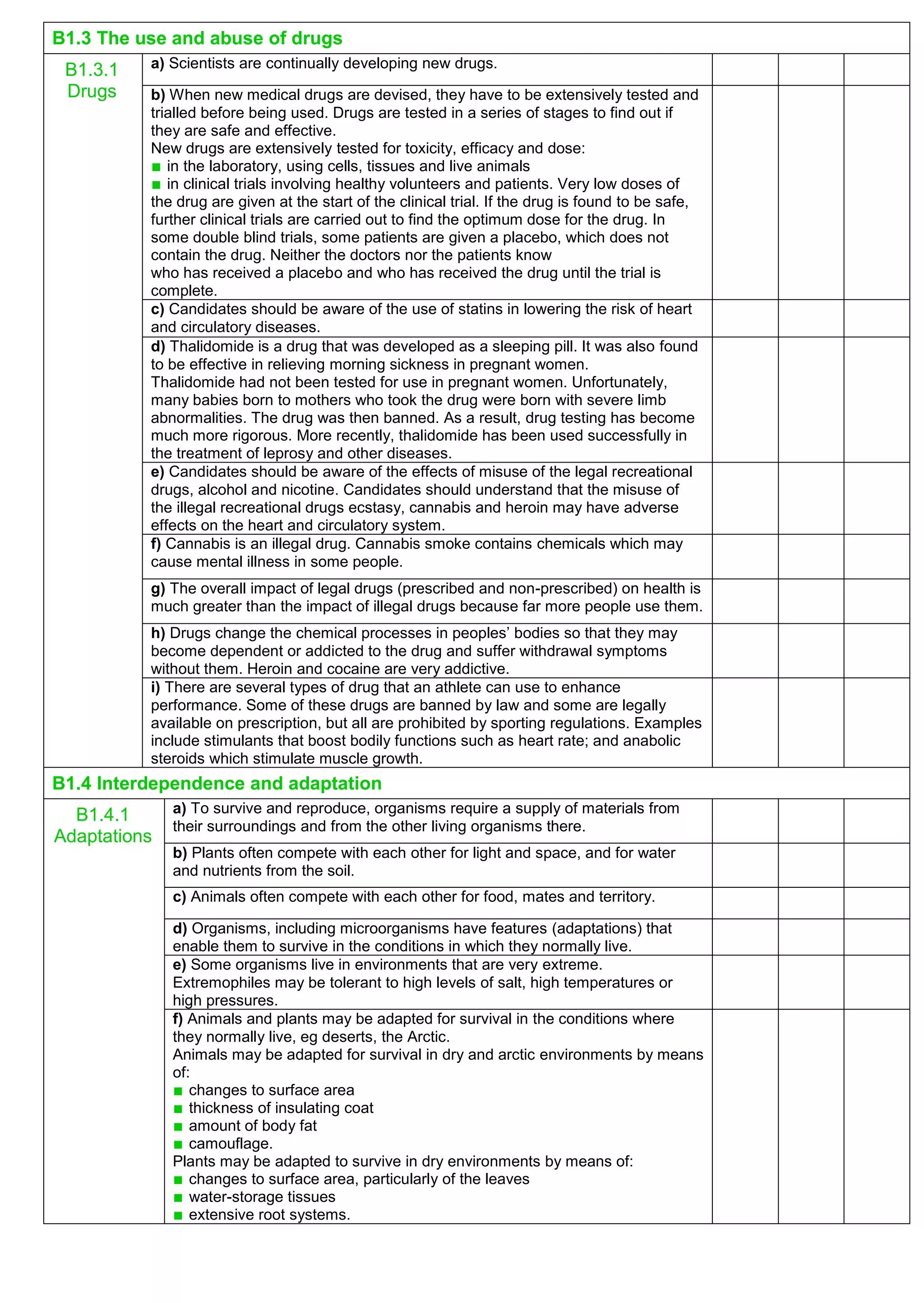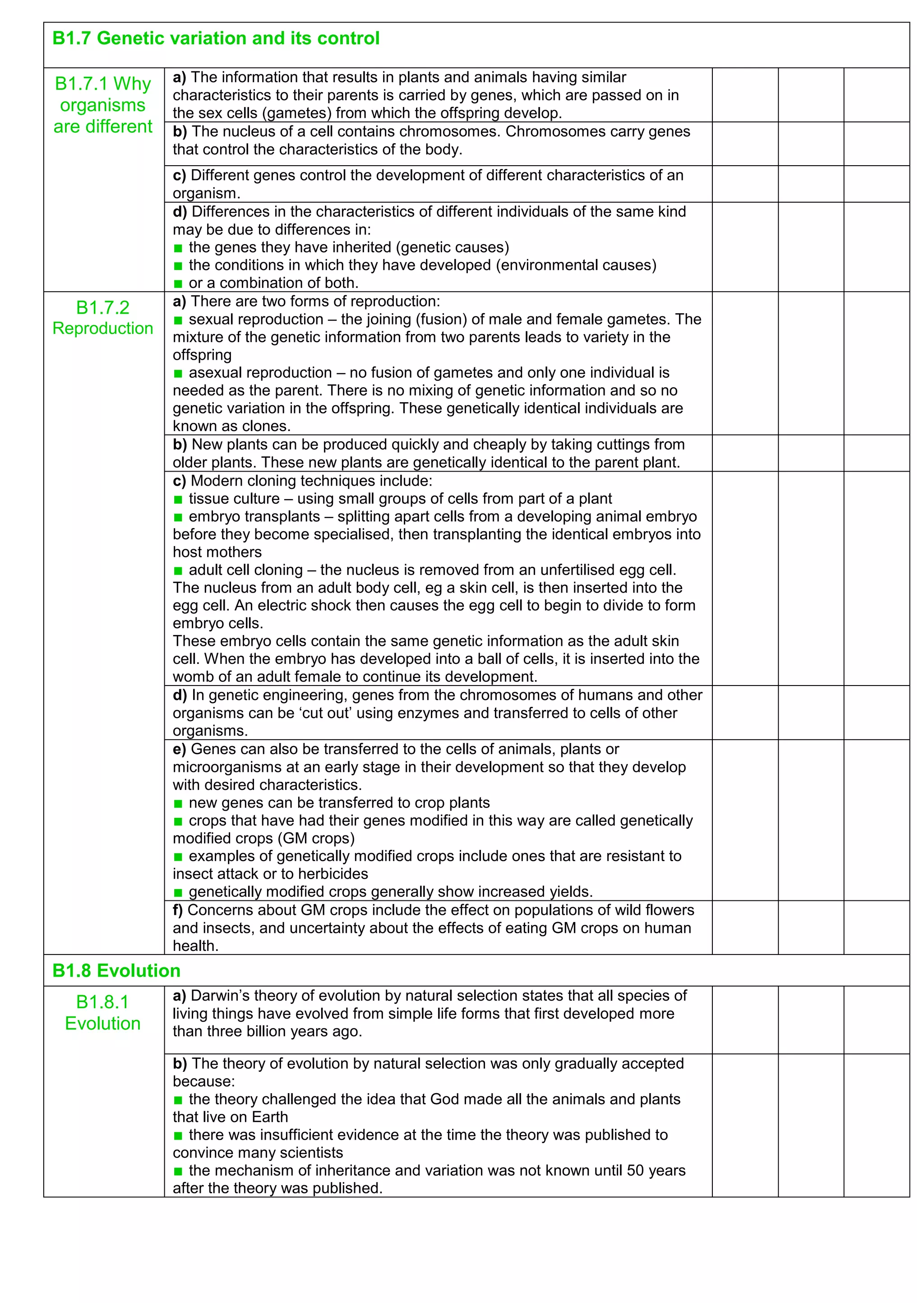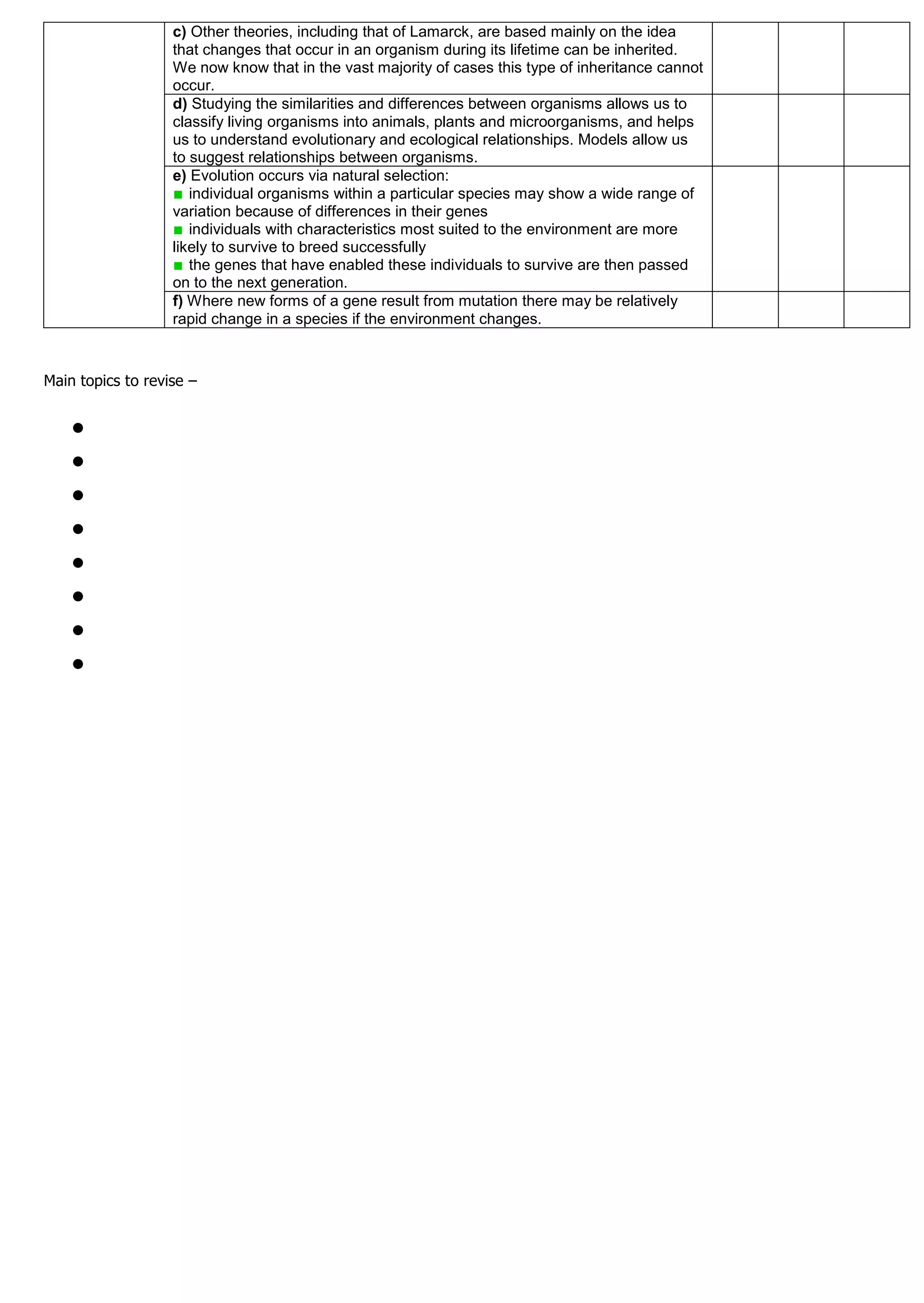This document provides information on keeping healthy through diet and exercise. It discusses the importance of a balanced diet with proper nutrients and the role of exercise in energy expenditure. It also covers how the body defends itself against infectious diseases through the immune system and antibodies. Pathogens like bacteria and viruses are discussed as well as treatments like antibiotics, vaccines, and drug development. The roles of nerves, hormones, and homeostasis in the body are outlined.






